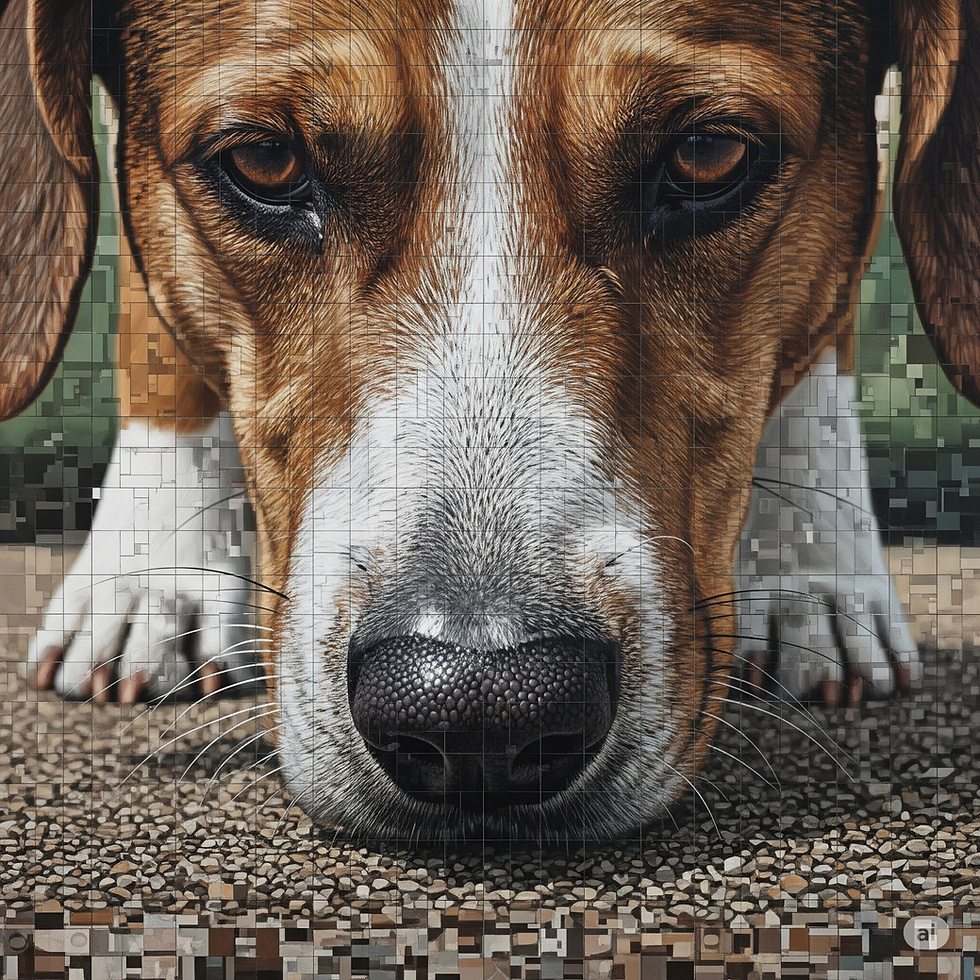Training Topic: Easy Dog Enrichment
- Max Machon

- Nov 17, 2024
- 2 min read
Updated: Dec 3, 2024

We have all heard the saying, "A tired dog is a good dog," and as a society, we tend to focus a lot on getting our dogs exercise. While it is true that our dogs need exercise, they also need mental enrichment. What is enrichment, you ask? We define enrichment as mental stimulation and problem-solving that fulfill the behavioral needs of an animal. For our dogs, this looks like scavenging for food, using their noses, playing, or performing behaviors that the dog has been genetically bred to do. As trainers, we see more behavior problems related to a lack of enrichment and mental stimulation than we do related to a lack of physical exercise. We believe every animal should receive some form of daily enrichment to improve their lives.
If we do not fulfill our dogs' need for mental stimulation/enrichment, they will seek to fulfill this need on their own. We often see a lack of enrichment and boredom manifest in behaviors like getting into the trash can, counter-surfing, inappropriate chewing, grabbing inappropriate objects, and even barking and reactivity. The good news is that creating an enrichment routine for your dog is very easy! A good enrichment routine will tire out your dog, give you more time to relax, and prevent inappropriate behaviors from forming.
So how do you go about creating an enrichment routine for your dog? Start with easy activities! Many owners make the mistake of trying to get the hardest puzzle or enrichment toy for their dogs. Most of the time, this just creates frustration and causes the dog to give up or destroy the toy. We want our dogs to have fun and be successful with their initial forms of enrichment. They need to learn how to problem-solve first. Once they are successful with the easier forms of enrichment, you can gradually make things more difficult. A treat scatter in the yard, snuffle mats, lick mats, slow feeders, or dig boxes are all great introductory forms of enrichment. These activities are excellent for feeding your dog their meals instead of using a bowl. Kongs, treat balls, and puzzle toys provide more of a challenge and tend to last longer. These toys can be given once your dog has mastered the easier levels of enrichment. Longer lasting enrichment toys work well in a crate or during longer absences. Check out our video on our top ten favorite interactive enrichment toys, or visit our enrichment page on our website for more ideas.
Enrichment does not have to be food-related. Sniff walks, tugging, hide and seek, tracking, or even herding games can all be forms of enrichment for our dogs. Think about your individual dog: what they enjoy, what their breed or mix of breeds was bred to do, and then create an enrichment routine based on that information. Your dog will thank you for exercising their brain!



Comments